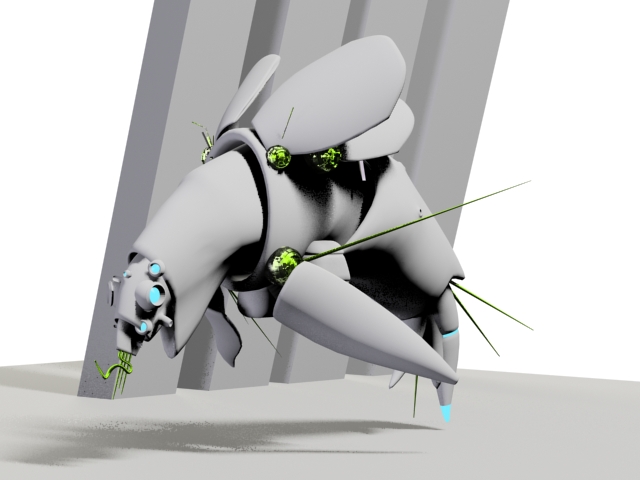BY LETTER
Early Vec and Neumann Development
History > 0030 to 0900 AT: Solsys Era
History > 0030 to 0900 AT: Solsys Era > 130 to 400 AT: The Interplanetary Age
Sophonts > Modosophonts > Aioids and Sophtware
Sophonts > Modosophonts > Vec
History > 0030 to 0900 AT: Solsys Era > 130 to 400 AT: The Interplanetary Age
Sophonts > Modosophonts > Aioids and Sophtware
Sophonts > Modosophonts > Vec
Intelligent robots in the Interplanetary Age |
 Image from Juan Ochoa |
Robots were developed during the late Information age mostly for use in industry, and at first were mostly immobile and very different from the humanoid robots of earlier science fiction. Humanoid or bioform robots were built for novelty value for the most part, and were little more than toys. Over time more sophisticated robots with simple intelligence were built, for entertainment and companionship. In the late 1st century AT there was an aging demographic, with an increasing number of old people on Earth in varying states of health, all needing to be kept amused, and semisentient robots could act as assistants and guardians.
The first human-level Artificially Intelligent systems were software entities running on large immobile computing systems. On occasion these large entities were allowed to remotely control robotic bodies; some consider these bodies to be the first truly sophont robots, while others reserve this name for the wholly self-contained mobile AI units which were built several decades later. These self-aware robots were given the name Moravec Robots, after the Information Age seer Hans Moravec. Soon they became known universally as Vecs.
As the exploration and exploitation of space began to gather pace, robotic mining and construction systems were very much in demand. A new way of organising swarms of mining or construction robots was required, and observation of swarm behaviour in animals led to the development of decentralised control and processing within multiple units. These new ways of organising swarm behaviour were analogous to those organic systems within a cell or a multicellular organism which use basic instructions such as those coded into DNA to build incredibly complex structures like trees and mammalian brains, with no conscious slavedriver instructing the various active agents.
Such swarms with basic problem-solving capabilities were used for mining Luna, asteroids, Mars and more distant moons and objects. Many industrial vecs or swarms were highly competent and self-reliant, although their mental characterisics were very different to human minds.
Intelligent mobile robots in the Interplanetary age could therefore be grouped into a number of different types; human-like vecs, generally used for entertainment, companionship or as status-symbol servants, and the very different industrial robots.
In order to increase the flexibility of automatic mining robots a group of AI and superbrights led by Vanessa Dietrich encouraged the incorporation of self-awareness circuitry into these industrial swarms. Some self-aware, self-replicating swarms moved off to colonise asteroids and other bodies by themselves. These self-replicating devices, known as Neumanns, were treated with suspicion at first, but proved very successful; the first mission to another star (Alpha Centauri) was equipped with a particularly sophitsticated form of neumann, an experiment which did not quite have the desired results.
Self-awareness routines were also used in the Feynman Expert System software and other superbright partial copies and didactic programs: such routines were often incorporated into vec bodies for use as teachers or instructors. Partial personality replication and self-awareness routines were also used in entertainment vecs (known as Simms or Character-bots) based on famous actors and individuals living and dead.
As well as partial simulations of famous humans, emulations of famous fictional robots of previous centuries became popular; Kryten, Marvin, Robby, Daneel, Morag the Moravec from the Planet X epic anime saga of 86 AT, and other many other robo-characterbots appeared during this time.
The most advanced forms of vec developed at this time were effectively self-organising blank slate personalities given the freedom to develop almost like a human being. Vec robots were becoming more varied and more alive as the Interplanetary age progressed.
Related Articles
Appears in Topics
Development Notes
Text by Steve Bowers
Initially published on 14 May 2009.
Initially published on 14 May 2009.






